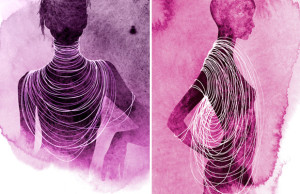Frogs Are Not Sexy

Written by Sender Rozesz. Sender Rozesz is a practicing attorney with a background in Jewish pluralistic education for adults. Sender Rozesz is Jewrotica’s resident Double Mitzvah columnist. The views reflected in his writing represent his own personal views, and are not intended to reflect the views of any organizations, institutes or associations with whom he may be affiliated.

Last year, this week, we discussed the first of the ten plagues that G-d visited upon Egypt: Blood. In this plague, the water of the Nile river, the source of all of Egypt’s irrigation and abundance, and indeed, worshiped as a deity, was transformed into blood. Water into blood. Cold into hot. Apathy into passion.
This week, as the Parshah of Va’eira is upon us once more, let us discuss the second of the ten plagues that emerged from the Nile river: Frogs.
This has always been an odd one to me. Frogs? Of all creatures? Frogs are slippery and slimy, but they are neither particularly scary, nor particularly gross. From tadpoles to lily pads, they are the standard pet for adolescent boys. Could not G-d have come up with a creature a bit more frightening or intimidating for His second plague? Something more dramatic? Frogs are simply not sexy!
Even when raining frogs makes an awkward appearance in the film Magnolia, you kind of shrug and say, “weird,” without any sense of horror or doom. They simply don’t come across as very plague-like. Sure, they were a terrible nuisance to the point of distraction, as they found their way into the houses and bedrooms and beds and people and ovens and kneading troughs, and Pharaoh had to beg Moses to get rid of them. But rodents could have been just as irritating, or monkeys, or Minions for that matter.
So why frogs?
Here are three reasons that make frogs excellent candidates:
First, frogs meant something to the Egyptians. They were a symbol of fertility, likely because millions of frogs would be born each year following the flooding of the Nile, which brought such abundance and life to an otherwise arid land. Thus, the Egyptian goddess of fertility, Heqet, was depicted as a woman with the head of a frog or – wait for it – a frog at the end of a phallus.
In this context, the irony – and the amazing appropriateness of the plague – is clear. The Egyptians did whatever they could to disrupt the fertility of the Israelites. As we discussed here, the enslavement itself was intended to make the Israelites too exhausted to procreate. Indeed, Pharaoh had commanded the Jewish midwives – a role that the Egyptians associated with Heqet – to kill the male children that they were delivering. When that did not work, he ordered his minions to drown the Jewish boys in the Nile. Pharaoh thus sought to sabotage fertility, using midwives and the Nile. Now suddenly, out of the Nile itself emerges Egypt’s symbol of fertility to wreak havoc and vengeance on the oppressors. In fact, according to one Midrash, in coming “into your bed…and into you,” the frogs actually caused castration to many Egyptian men, so that they would henceforth be infertile. Tit for tat.
Second, certain African frogs have the distinction of being able to transform from one gender to another. This is why, in Jurassic park, the supposedly all-female dinosaurs were able to switch genders and reproduce, as the scientists had used frog DNA to fill in the genetic gaps in the dinosaurs’ DNA. And what prompts a frog’s physiology to switch sides? Typically, it is when the male population is so deficient that the normal reproductive cycle is threatened, that female frogs will transform into male frogs.
(As a side note, this is to be distinguished from the modern wave of human gender re-identification and reassignment, which is not prompted by a biological imperative, as it results in sterility – not fertility. Although this begs the perhaps controversial question: If humans did have the same characteristic as African frogs, switching genders when the biological environment demanded it, would we then be satisfied with our gender assignment, knowing that if we were supposed to be something different we would be?)
But getting back to frogs – how cool is that? Pharaoh decrees that the Jewish male population be decimated by killing all newborn sons, intending that the Israelites will be left with a disproportionately-large female population, for the reasons that we discuss here. Instead what happens? “And the people multiplied and became very strong.” Exodus, 1:20. Now, when it comes time for Egypt’s comeuppance, what form does the plague take? Frogs, which similarly defy the natural consequences of an asymmetrical gender population. The clear message? G-d will find a way to ensure that His people will thrive notwithstanding Pharaoh’s best efforts.
Finally, whereas the first plague was intended to transform the Egyptians’ cool apathy towards G-d – symbolized by their worship of the Nile – into the heat of spiritual passion represented by blood; the second plague was the opposite: to cool off the Egyptians’ excitement for materiality. This is why G-d emphasized that the frogs “will go up and come into your house and into your bedroom and upon your bed and into the house of your servants and into your people, and into your [hot] ovens and into your kneading troughs; and into you and into your people and into all your servants, the frogs will ascend.” Exodus, 7:28-29. The frogs, naturally cold creatures who live in a naturally cold habitat, would infiltrate the Egyptians entire material world and all of their possessions. And as a practical matter, your enthusiasm for houses, furnishings, and food, simply cannot be the same if you are going to be sharing them with swarms of frogs.
And so, in many ways, the frogs were the second stage in the installation of a spiritual thermostat, bringing the temperature of Egypt back into balance.













0 comments